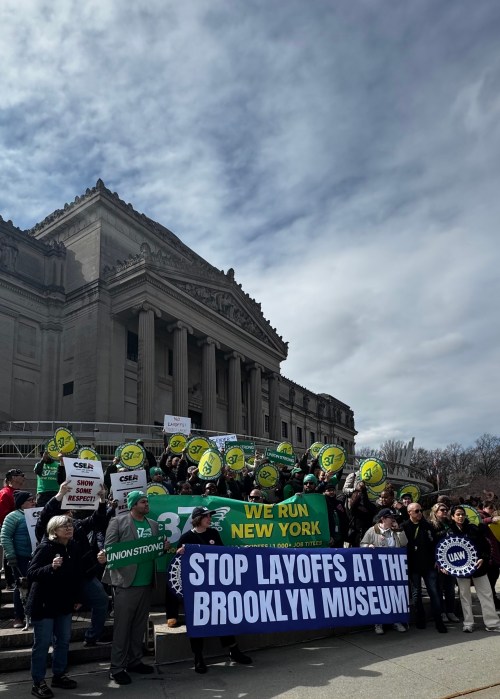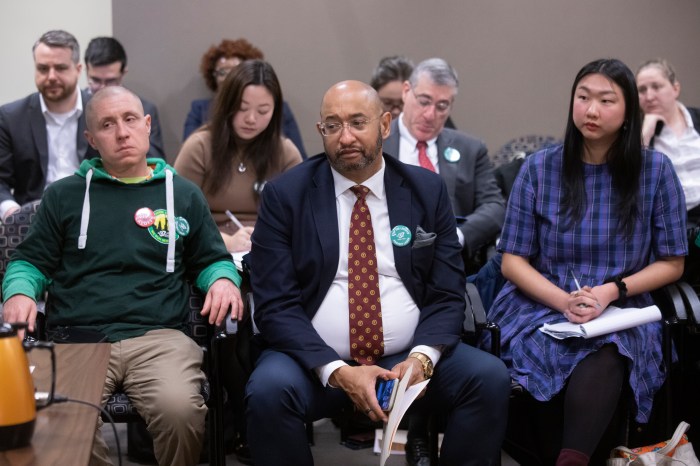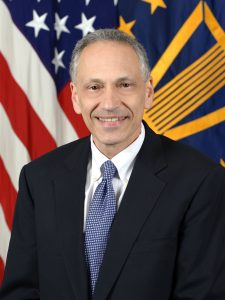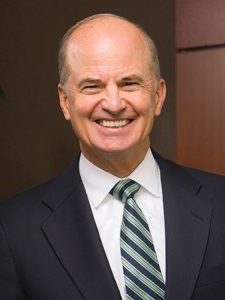The recent 60 Minutes segment on Israel’s pager operation in Lebanon contained an 8-second video clip of a pager exploding on the person of a Hezbollah operative standing in the fruit section of a store. At the moment of the explosion, twelve adults and two children are seen nearby, two adults within a foot or so of the target. Upon detonation, one of them ran away while the other stayed in place. Other than the intended target – the holder of the pager – no one in the area of the blast was injured nor did it cause any damage in its vicinity.
According to 60 Minutes about 3,000 pagers exploded simultaneously on September 17 resulting in some 30 deaths, of which 12 were civilians, including 2 children. Accordingly, approximately 1% of the explosions resulted in deaths, of which 0.4% were civilian deaths, or, 99.6% of the attacks did not kill civilians. There is little data about civilian injuries, most likely indicating a low number of them. And, extrapolating from the ratio of combatant to civilian deaths, it is reasonable to assess that the number of civilian injuries from this attack is similar to a fraction of the 1% death rate. In other words, over 99% of the killed or injured in pager attack were the intended targets of the operation, Hezbollah operatives.
The low civilian death and injury rate is explained by reports that Israel inserted 1-3 grams of explosives in each pager. The pressure of a blast of 3 grams or less of explosives is very low, even at a close distance. Energy or forces decreases from its source according to the inverse square rule , as explained here, “the energy twice as far from the source is spread four times the area, hence one-fourth the intensity (see also here). As , the greater the distance from the source, the larger the area and lower the pressure.
However, as opposed to other forms of energy, the blast from an explosion begins with the movement of the blast away from the detonation faster than the speed of sound resulting in its initial stages in higher pressure closer to the blast and a sharper decrease in pressure in its initial movement from the blast. Even still the attack’s success rate was 99%.
Hence empirically, as seen from the video clip, and mathematically, it was foreseeable that there would be little or no danger to people in the immediate vicinity of each blast and even less danger at a somewhat larger distance, making the question of whether these detonations were indiscriminate a moot point. The 60 Minutes segment contained a section describing how Israel tested the pagers “to calibrate the grams of explosives needed to be just enough to hurt the fighter but not the person next to him.”
Nevertheless, beginning the day after the pager attack, commentators began ascribing legal fault to the operation’s planners for executing an attack that was indiscriminate and hence a violation of international humanitarian law.
Mapping the Widespread Criticisms under the Law of Armed Conflict
The day after the Israeli pager attack former State Department attorney and senior advisory at the International Crisis Group Brian Finucane questioned in Just Security, “What were the anticipated effects in terms of blast strength and radius of the exploding pagers? Was it anticipated that they would injure or kill their holders? Others in their vicinity?” Finucane answered his own question the next day: “Israel, or whoever was launching this attack, didn’t know where these people were going to be located at any given time, so it makes it really tough to assess proportionality or other precautions.”
In a Deutsche Welle interview, Professor Janina Dill argued that the “proportionality calculation for each of these explosions,” would be “very hard to achieve” absent “intelligence where the pagers would be at the time of explosion;” hence it “wasn’t possible for the attacker to anticipate civilian harm therefore meaningful proportionality calculation wouldn’t have been possible.” Professor Dill argued that “with hundreds of similar small bombs going off at the same time the attackers wouldn’t know in advance whether there would be civilians surrounding these attacks” or “when the attacks should go off in order to minimize civilian harm” and concluded that Israel’s pager attack “is almost impossible to reconcile with international law.”
Lama Fakih, Middle East and North Africa Director at Human Rights Watch published: “The use of an explosive device whose exact location could not be reliably known would be unlawfully indiscriminate, using a means of attack that could not be directed at a specific military target and as a result would strike military targets and civilians without distinction.” Likewise, Amnesty International said: “The evidence indicates that those who planned and carried out these attacks could not verify who else in the immediate vicinity of the devices would be harmed at the time of the explosion, or even whether only fighters had been given the pagers and radios. Therefore, the attacks were carried out indiscriminately, would be unlawful under international humanitarian law and should be investigated as war crimes.”
On Nov. 7, the International Bar Association published a statement quoting several of their committee members. Sara Elizabeth Dill, Co-Vice Chair of its War Crimes Committee said: “The simultaneous nature of the attacks makes distinction of civilian targets or any proportionality analysis essentially impossible.” According to Markus Beham, Co-Vice Chair of its Human Rights Law Committee, “it is hard to see how [the principle of distinction] was not violated by these attacks.” Toby Cadman, a member of the IBA War Crimes Committee Advisory Board said: “Imagine for a moment that a number of those targets had unknowingly boarded commercial jets carrying explosive devices and imagine they boarded those flights with the explosive devices undetected … That could have resulted in countless civilian casualties,” a concern that did not materialize as the operation’s planners might have taken that into account. The IBA statement also quoted Professor Craig Martin: “If you don’t know where each of these explosives are, and who – in fact – is going to be injured, it’s hard to see how a very granular assessment of proportionality could have been undertaken, either collectively or in relation to each of these individual attacks.”
In a statement issued by a group of 22 U.N. special rapporteurs, after referring to the pager operation as a “terrifying violation of international law” and expressing their “deepest solidarity to the victims of these attacks,” the signatories argued that the attack “would inevitably violate humanitarian law, by failing to verify each target, and distinguish between protected civilians and those who could potentially be attacked for taking a direct part in hostilities” and recommended that the matter be investigated “to establish the truth and enable accountability for the crime of murder.”
The Security Council held a meeting on the pager attack on September 20, where U.N. High Commissioner for Human Rights Volker Turk said that the attack violates international law since the planners were “without knowledge as to who was in possession of the targeted devices, their location and their surroundings at the time of the attack.” Turk added: “If the attacker is unable to assess the compliance of the attack with binding rules of international law, notably the likely impact on civilians, then the attack should not be carried out.”
State delegates made similar statements at a Security Council meeting. Guyana said the “attacks were apparently aimed at specific targets, but ultimately were indiscriminate in their effect, as many of the detonations occurred in crowded areas.” According to Algeria, “Those acts of aggression amount to war crimes” as they were “deliberate and indiscriminate” in nature, targeting “densely populated areas.” China claimed that “[t]he explosions caused thousands of civilian casualties.” Sierra Leone claimed the attacks “occurred in populated areas” while Iran said the operation “target[ed] thousands of people.” According to Syria, the operation was designed to “kill some of those who hold them [the pagers] without discrimination and cause serious injuries to others.” Russia said that those behind the attack “have deliberately sought to incite a large-scale armed confrontation in order to spark a new major war in the Middle East.”
And, in a February 26, 2025 letter submitted to the U.N. Human Rights Council, the Association of Iranian Jurists Defending Human Rights claimed that the pager attack “specifically targeted Lebanese civilians.”
According to David Sanger of the New York Times: “And while the target was Hezbollah fighters, the victims were anyone standing around, including children.” Michael Walzer, author of Just And Unjust Wars (1977) wrote in an opinion piece entitled Israel’s Pager Bombs Have No Place in a Just War that the pager operation was “very likely war crimes” as “[n]o similar claim of minimizing risk to civilians can be made for the decision to explode the devices.”
But on What Basis? Assessing the Criticisms
Over five months have passed since the pager operation and no evidence or data of civilian injury or death has emerged beyond what was reported immediately following the operation. Similarly, neither has any indication emerged to refute the proposition that Israel knew that the pagers were on the person of Hezbollah operatives. Reports of the Iranian Ambassador to Lebanon’s eye and hand injuries (here and here) indicate he was holding and reading the pager’s message when it exploded; in other words, he presumably had some involvement with Hezbollah’s operational activity. Unlike cell phones that people may lend to others, it is likely that Hezbollah required their operatives to always have their pagers readily accessible. One of the two children killed in the operation was bringing her father’s beeping pager to him when it exploded, apparently the only known example of such an occurrence.
Though Michael Walzer wrote in his opinion piece that Israel “had to know that at least some of the people hurt would be innocent men, women and children,” international law prohibits the “incidental loss of civilian life” and “injury to civilians” only if the attack is excessive to the military advantage anticipated (API Article 51; API Article 57; IHL Rule 14).
In an article on Israel’s 2014 campaign in Gaza, Mark Ellis, the executive director of the International Bar Association, explained, “No matter how appalling, the death of civilians during armed conflict does not in itself constitute a war crime.” Ellis however argued that “Israel’s Iron Dome defense shield has largely neutralized Hamas rockets” and that “[b]y its own admission, the Israeli government says that it intercepts roughly 90 percent of all rockets fired into Israel from Gaza. The Iron Dome shield has essentially rendered useless” rockets launched by Hamas. Ellis concluded that this dynamic makes Israel “quasi-unassailable,” hence Israel “has a greater legal duty to adhere to a higher proportionality standard.”
Beyond the conceptual issues raised by Ellis’s argument that a country’s legal authority to exercise its right to self-defense decreases as its military capability to do so increases, Ellis does not consider two essential facts. First, the warning time to find shelter for Israeli civilians living in southern Israel, meaning close to Gaza, is 15 seconds while for the Tel Aviv region, or central Israel, it is 90 seconds. The Iron Dome’s kill rate in a 15 second window is expectedly lower than in a 90 second window, hence the 90% interception of Hamas rockets may not reflect the actual danger to Israelis in the south. More importantly, because of falling debris from intercepted rockets, Israel instructs Israelis to stay in shelters for 10 minutes after the warning sirens end (here and here). In other words, were the Iron Dome’s interception rate to be 100% Israelis would still need to take shelter because of incoming Hamas rockets, an untenable situation requiring an appropriate military response.
Falling debris is a known risk in warfare. Operation Desert Storm, or the first Gulf war, ended on Feb. 28, 1991. See Patriots Stop Scuds but Israeli Man Is Killed by Debris, New York Times, January 26, 1991: “American Patriot missiles intercepted seven Iraqi Scuds that were fired at Haifa and Tel Aviv this evening. But at least one person was killed and 42 were wounded when the midair explosions spewed heavy, burning shrapnel onto residential areas below. … Thousands of people in Tel Aviv watched, horrified and fascinated, as a shower of deadly debris plummeted toward them”; Los Angeles Times, February 26, 1991: “Flaming debris from an Iraqi Scud missile slammed into a makeshift barracks full of U.S. troops near here Monday night, killing at least 27 soldiers and injuring 98.”
Perhaps some pattern can be seen in commentaries not considering the risk of falling debris from intercepted rockets or the pressure of a blast of 3 grams of explosives even at a short distance. Legal arguments should not ignore factual reality.
Facing Up to the Strategic Purpose
In addition to the claims that Israel’s pager operation was an indiscriminate attack, David Sanger wrote, “The explosions had little strategic purpose,” citing “one Western diplomat with long experience dealing with the Middle East said, they were hardly about to force Hezbollah’s leaders to give up a cause they have battled over for four decades.” Michael Walzer similarly wrote, “A catastrophic war with Lebanon is now the greater danger.” At the Sept. 20 Security Council meeting, U.N. Under-Secretary-General of the Department of Political and Peacebuilding Affairs Rosemary DiCarlo informed the Security Council that Hezbollah’s Hassan Nasrallah said that “Israel exceeded all limits, laws and red lines” regarding the pager operation and said Hezbollah would “exact a heavy price and a fair punishment.” She added that Nasrallah “reiterated that the Lebanon front would stop only once the aggression on Gaza ended.”
However, the night before the pager operation, the Israeli cabinet approved a decision to include the return of its displaced citizens in the north, evacuated because of the Hezbollah rocket attacks. On Israel Channel 12 evening news on the day of the attack, veteran Israeli Arab affairs correspondent Ehud Yaari said, “tonight Hezbollah is asking itself if the operation we saw today is preparation” for something else and explained that the operation compromised Hezbollah’s command system which was based on contacting its operatives through pagers which it can no longer do. Two days later the Defense Minister Yoav Gallant said that Israel is in a “new phase” of its war and that Israel’s “sequence of military actions will continue.” The day after the pager attack Guy Barak published in Axios that “[a] former Israeli official with knowledge of the operation” said Israel the pager operation was “a surprise opening blow in an all-out war to try to cripple Hezbollah.” Yossi Melman reported that Israel’s codename for the pager operation was “Opening Blow.”
The days after the pager attack, Israel executed a similar attack in Lebanon, exploding hundreds of Hezbollah walkie-talkies. On Sept. 20, Israel killed Hezbollah senior commander Ibrahim Aqil along with several other Radwan force commanders. Aqil was a principal member of the Hezbollah cell that claimed responsibility for the 1983 bombings of the U.S. Embassy and Marine barracks in Beirut, killing a total of 304 people. On Sept. 27, Israel killed Hezbollah leader Hassan Nasrallah and continued to destroy Hezbollah rockets and tunnels (here, here, and here). On Nov. 27, Israel and Hezbollah signed a ceasefire agreement. Several weeks later commentators reported on the affect Israel’s attack on Hezbollah had on the fall of the Assad regime (here, here and here). On February 28, 2025, Hezbollah’s Al-Manar TV based in Lebanon aired an interview with Hassan Nasrallah son and daughter who spoke about how Israel’s pager operation depressed their father given the significant effects of the attack.
Israel’s actions against Hezbollah and Syria weakened Iran. In a Jan. 17, 2025 NPR interview, Amos Hochstein, then U.S. Special Envoy who helped negotiate the ceasefire, was asked the question why Israel’s ceasefire with Hamas “came together now.” He answered: “The real game changer was the ceasefire between Israel and Hezbollah … When Hezbollah did the deal, it meant a few things. Suddenly, Israel was fighting a one front war, not a two front war, and that was very bad for Hamas. The second was the sense of betrayal. Hezbollah betrayed them. Iran betrayed them. They signed a deal without them. And so, suddenly, the whole world changed on them.”
Finally, in a Feb. 6, 2025 interview on Israel’s Channel 12, then Defense Minister Yoav Gallant said the Israel found Hamas hard disks in Gaza several months after October 7 that clearly indicated that Hamas expected Hezbollah to join its attack on Israel (here at 3:29).
Israel’s pager operation was not an indiscriminate attack. It was a strategic operation that achieved its objective.
IMAGE: People and first responders gather at the scene of a reported device explosion in Saida in southern Lebanon on September 18, 2024 (Photo by Mahmoud Zayyat/AFP via Getty Images)
The post Israel’s Pager Operation: Not an Indiscriminate Attack But a Strategic Success appeared first on Just Security.















